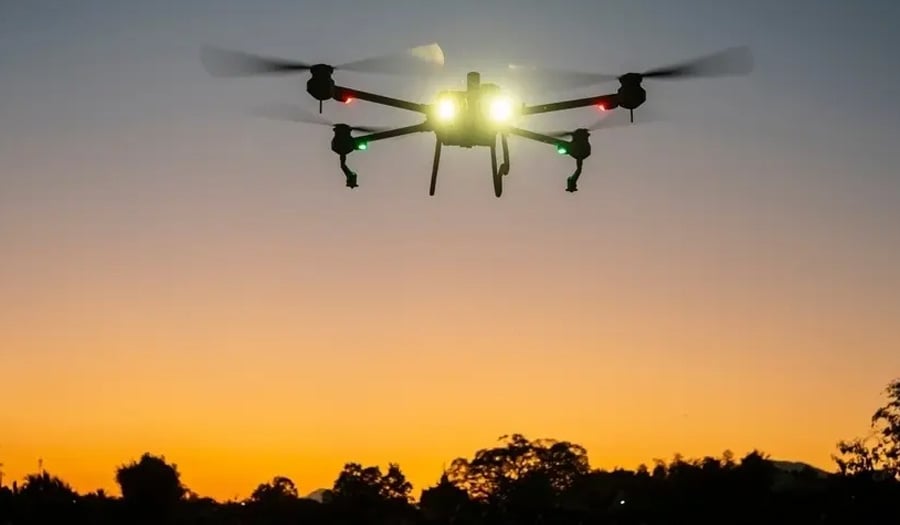The Sky Above Your City Just Changed Forever: Your 120-Day Drone Readiness Action Plan
Earlier this month, President Trump signed two executive orders that will fundamentally transform the skies above all American cities. Under these...
.png)
Last week, our team attended the FAA Drone/AAM Symposium in Baltimore, where we gained valuable insights into the future of Beyond Visual Line of Sight (BVLOS) drone operations. The FAA's upcoming notice of proposed BVLOS rulemaking (often referred to as “Part 108”) is primed to unlock unprecedented opportunities for drone operators, cities, businesses, and the entire drone ecosystem across the United States.
Here are some of our takeaways from the presentations, panels, and discussions we participated in during the week.
1. A Shift Towards Corporate Responsibility
The FAA is considering a novel approach focused on corporate certification and accountability for BVLOS operators, distinct from individual pilot certification used today. This approach recognizes the diverse and innovative nature of the drone industry and allows companies to develop internal programs, policies and processes to ensure compliance and are tailored to their unique corporate characteristics. . This shift will enable organizations to innovate and adapt more quickly to technological advancements, such as increasing levels of automation and reduced ‘humans-in-the-loop.'
2. New Operational Categories
The FAA discussed and appears to be considering the use of eight distinct categories of drone operations, plus an “Other” category for any new use cases that are introduced. This categorization could provide a clear framework to qualify and mitigate associated operational risks.
Conceptually, each category could be used to apply a balanced combination of conditions, limitations or restrictions such as limits on weight, speed, ground population, airspace characteristics or pilot to aircraft ratio. The categories include:
3. Operational Approval Types
Two types of operational approvals are being considered by the FAA. This tiered approach will allow individuals, organizations and businesses of all sizes to enter the drone market, fostering innovation and growth in the industry.
The first type is an Operational Permit, which would have lower regulatory restrictions. This would apply to smaller, lower-risk operations and involve less direct FAA involvement.
The second type is an Operational Certificate, which would have a higher regulatory burden. This would be for larger, more complex operations that require greater FAA involvement, including a team of inspectors to guide the operator through the certification process. The approval process for an Operational Certificate is expected to take longer than the Operational Permit.
By offering these two distinct approval pathways, the FAA aims to provide a clear framework for a wide range of drone operators to enter the market and expand commercial applications of the technology.
4. UTM and Third-Party Service Providers
Under the proposed rules, the FAA recognizes there will be a need for third party service providers market to develop solutions that address requirements BVLOS operators will need to meet. The FAA is considering a certification process for Third-Party Service Providers and the services they provide, as well as a means for operators to obtain credit for using those services in their operations. For example, the FAA is considering requiring UAS Traffic Management (UTM) services for operations that meet certain conditions, which may be provisioned by the operator themselves, or through a third party. The announcement of the first FAA-approved UTM service providers was announced at the event, showcasing the FAA’s approach toward low-altitude federated traffic management services.
5. Airspace Integration
The FAA is working on integrating drones into controlled airspace, with eventual plans to move towards auto-approvals as the ecosystem evolves. This integration will open up new possibilities for drone operations in urban areas and near airports, potentially revolutionizing last-mile delivery and urban air mobility.
6. Focus on Performance-Based Rules
Rather than prescriptive regulations, the FAA is leaning towards performance-based rules. This approach will rely on industry standards and allow for greater flexibility as technology evolves, encouraging ongoing innovation in drone design and capabilities.
7. Opportunities for Public Safety
The FAA recognizes the need for prioritizing public safety operations and is exploring digital means to manage airspace access during emergencies. This could lead to new opportunities for drones in emergency response and law enforcement.
8. International Harmonization
The FAA is working with international authorities to develop uniform standards across nations. This effort could open up global opportunities for U.S. drone companies and operators.
What This Means for the Industry and Communities
These proposed changes signify a major advancement in drone regulation, paving the way for widespread commercial adoption of BVLOS operations. We anticipate significant growth in the following areas:
At Airspace Link, we're already seeing the impact of these emerging opportunities through our involvement in groundbreaking initiatives like the Advanced Aerial Innovation Region (AAIR) in Detroit and our FlySafe Program, working with cities throughout the United States.
Advanced Aerial Innovation Region (AAIR) in Detroit
As a driving industry partner for AAIR, we're witnessing firsthand how this first-of-its-kind urban airspace infrastructure positions Michigan as a national leader in the emerging advanced aerial mobility industry. The region covers a 3-mile radius around Michigan Central, home to Airspace Link headquarters, providing open, shared infrastructure and services that enable commercial drone development while ensuring safety in the air and on the ground.
Airspace Link team is on several UTM-related American Society for Testing and Materials (ASTM) standard working groups to help standardize the future of UTM. Several Airspace Link customers, including the North Central Texas Council of Governments (NCTCOG), the City of Arlington, TX, are participating in the FAA UTM Key Site in the Dallas/Fort Worth (DFW) area.
The key goals are:
These initiatives align perfectly with the FAA's focus on UTM and third-party service providers, like the UTM Key Site, the AAIR initiative is set to become a model for cities nationwide, demonstrating how a coordinated, state—and city-supported drone ecosystem can attract businesses and open up the skies for various applications, including delivery, inspection, public safety, and first response.
Airspace Link FlySafe Program: Preparing Cities for the Drone Economy
As cities prepare for the growth in drone economies, our FlySafe Program is at the forefront of supporting local governments. This program, powered by our FAA-approved AirHub® Portal platform, empowers communities to safely integrate drones by:
We've seen success stories in cities like Arlington, TX, and Ontario, CA, where our FlySafe Program has helped organize and maximize drone efforts community wide. These cities are becoming drone-forward communities, supporting innovative drone integration and preparing for the opportunities that BVLOS operations will bring.
To that end, our UAS Framework for Cities, which includes a 6-step UAS Readiness Assessment, is helping communities:
As the FAA moves towards performance-based rules and simplified approval processes, programs like FlySafe will be a key support tool to help cities navigate this evolving landscape and seize new opportunities.
The Road Ahead
As these FAA rules take shape, it's crucial for businesses, pilots, and local governments to stay informed and engaged. The FAA will soon publish the proposed rules for public comment, and your input could help shape the future of drone operations in the United States.
At Airspace Link, we're excited about the possibilities these new rules will bring. We're committed to helping our clients and communities navigate this evolving landscape and seize the opportunities that BVLOS operations will offer. Through initiatives like the AAIR and our FlySafe Program, we're not just preparing for the future – we're actively shaping it.
Stay tuned for more updates as we continue to monitor these developments closely and work towards a future where drones are seamlessly integrated into our daily lives.

Earlier this month, President Trump signed two executive orders that will fundamentally transform the skies above all American cities. Under these...

On Friday, President Trump signed two executive orders that will fundamentally transform how drones operate in American skies. These aren't...

SUMMARY: Unmanned Aircraft System Traffic Management (UTM) is complicated. Government agencies are uninformed, under-equipped, and underprepared....